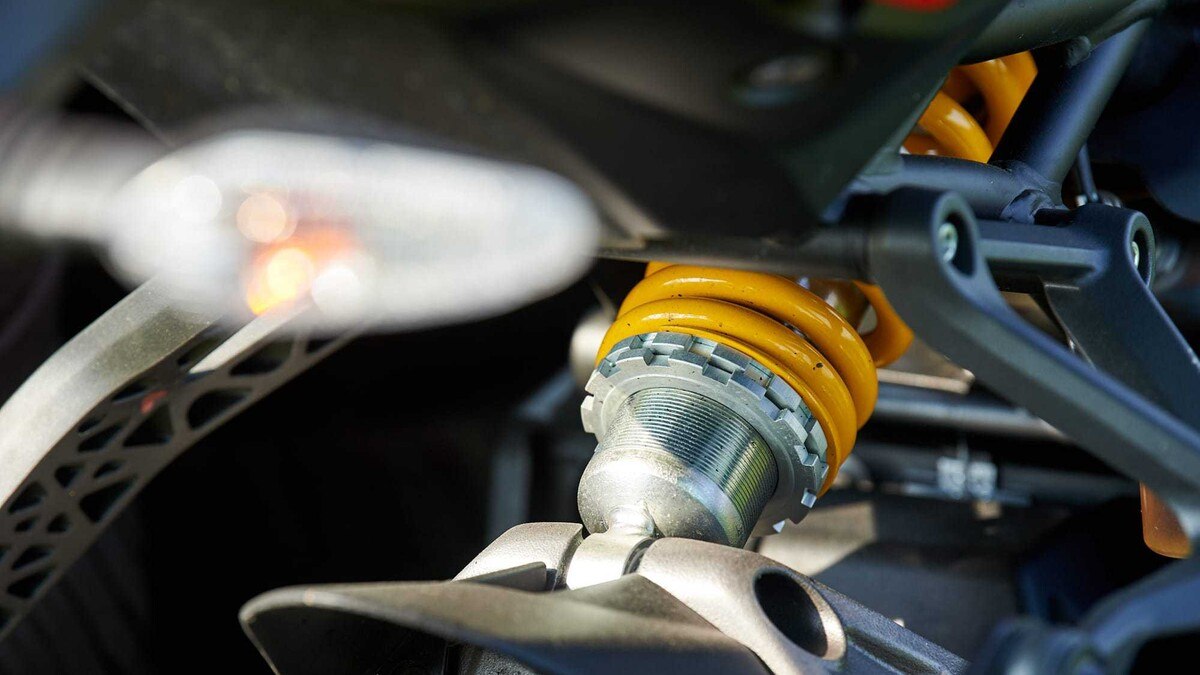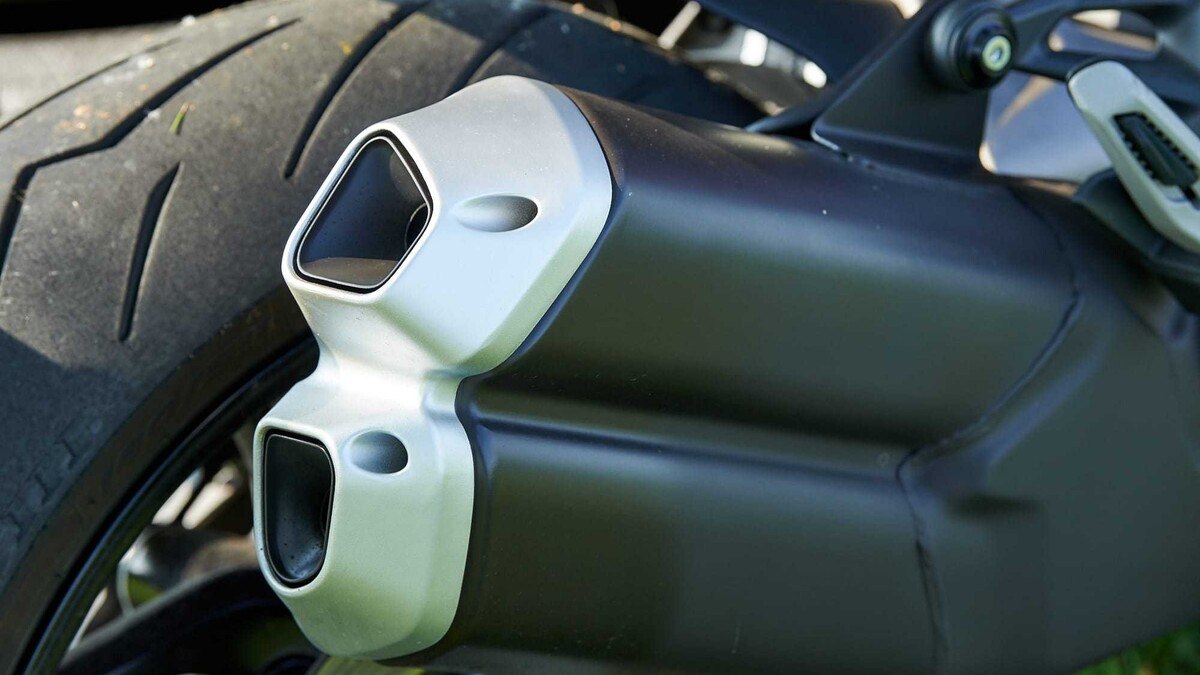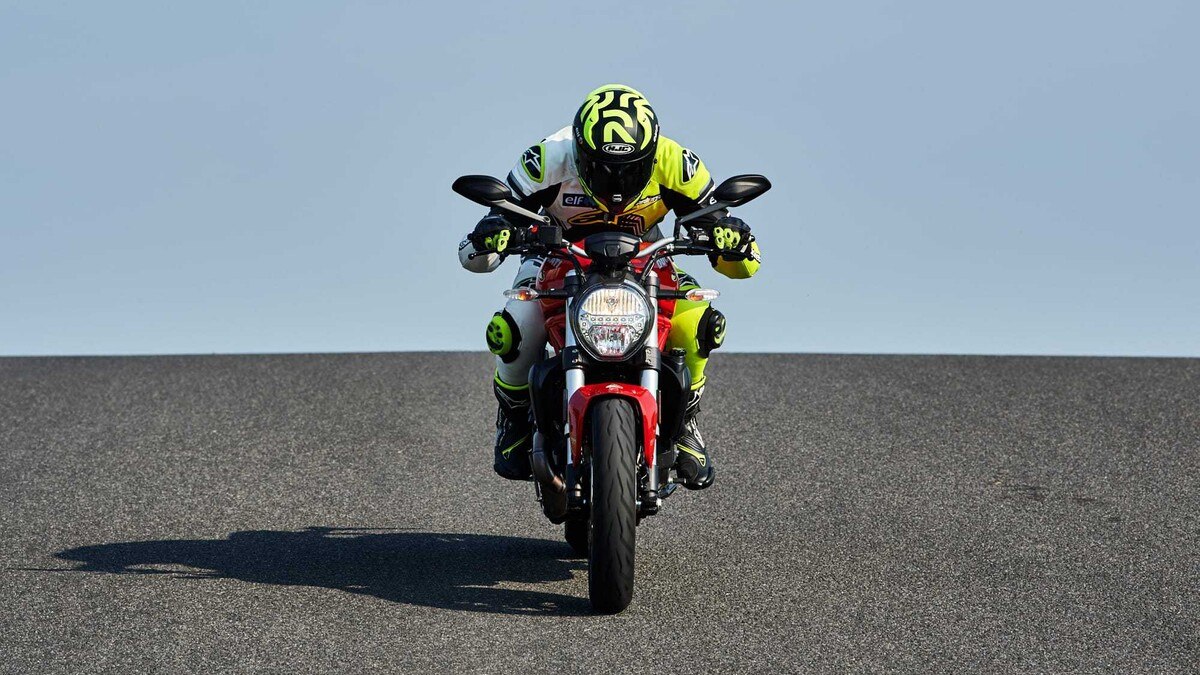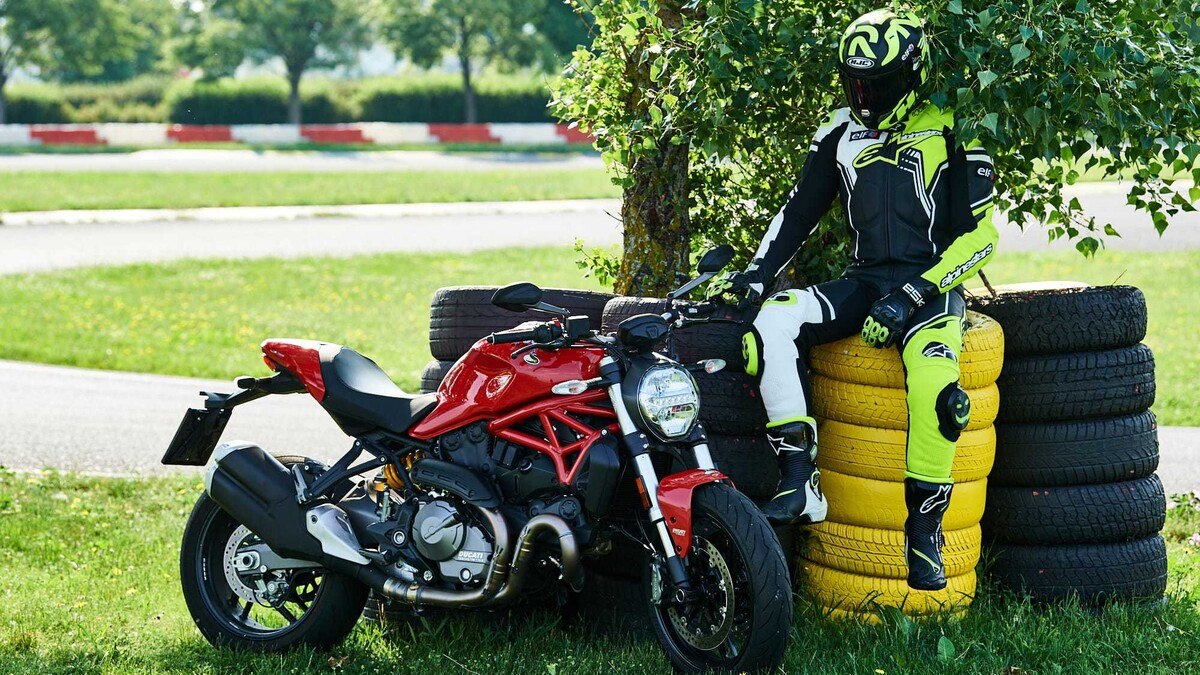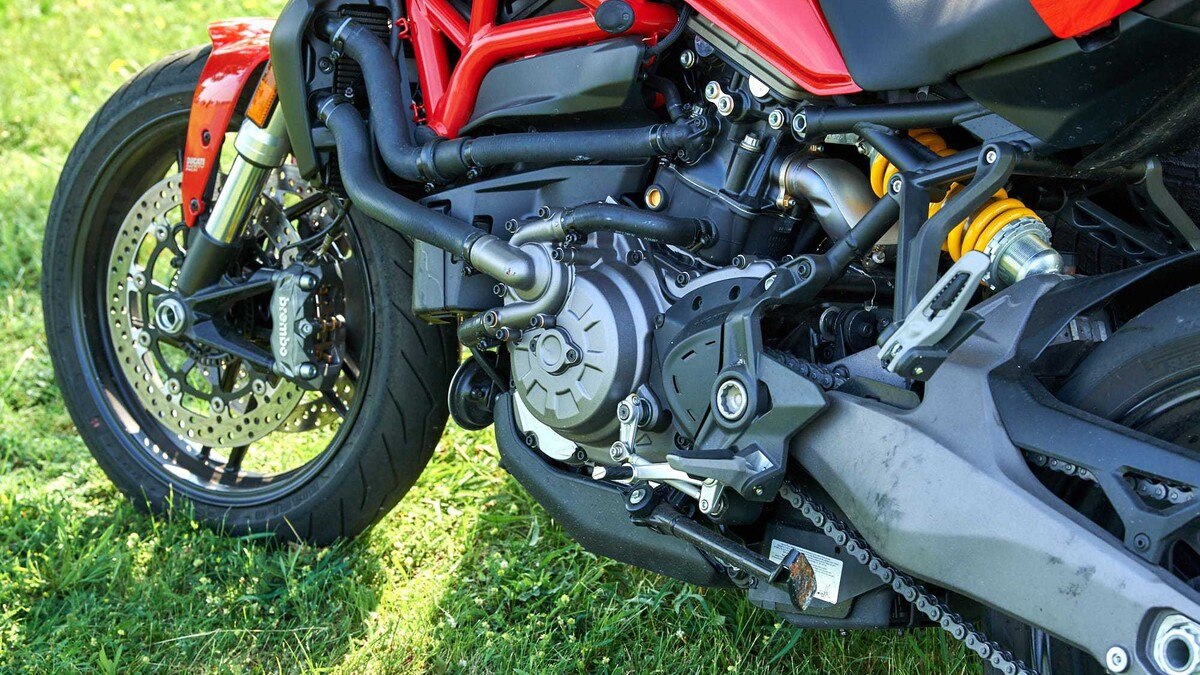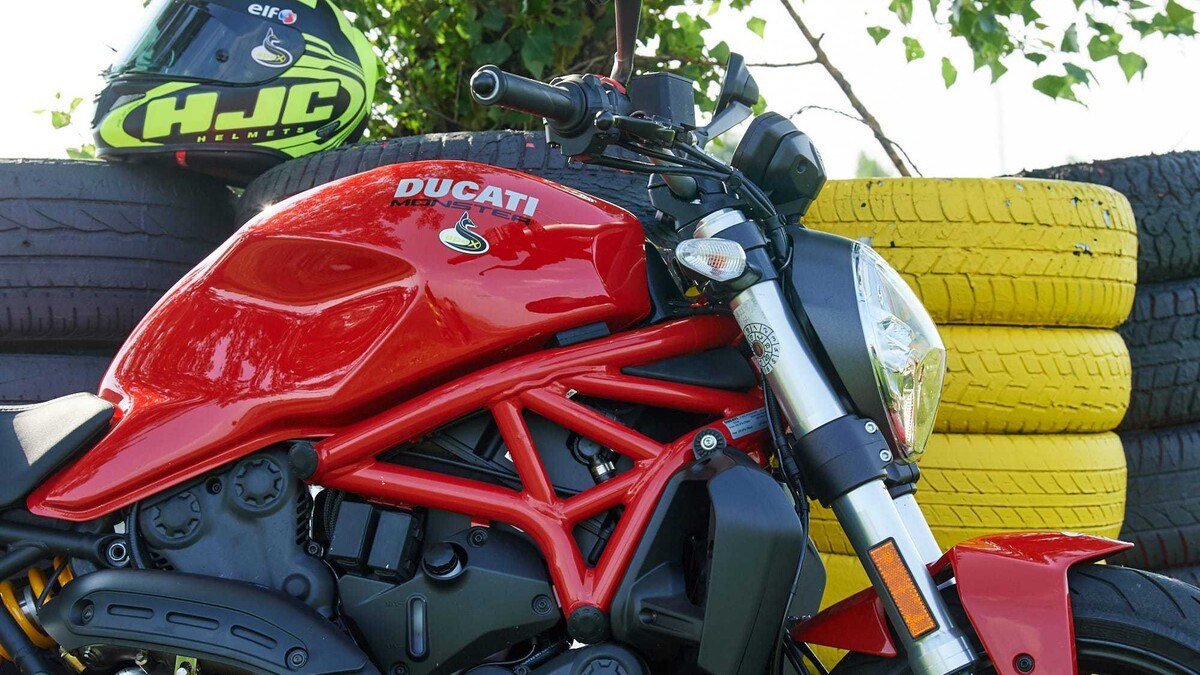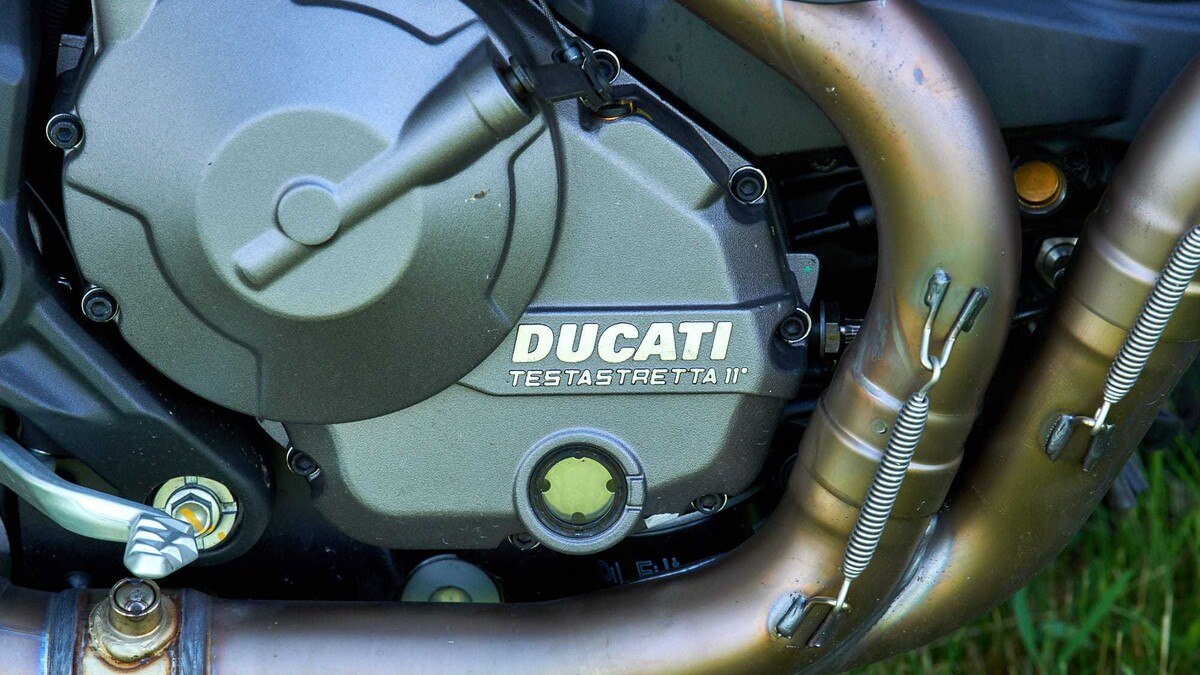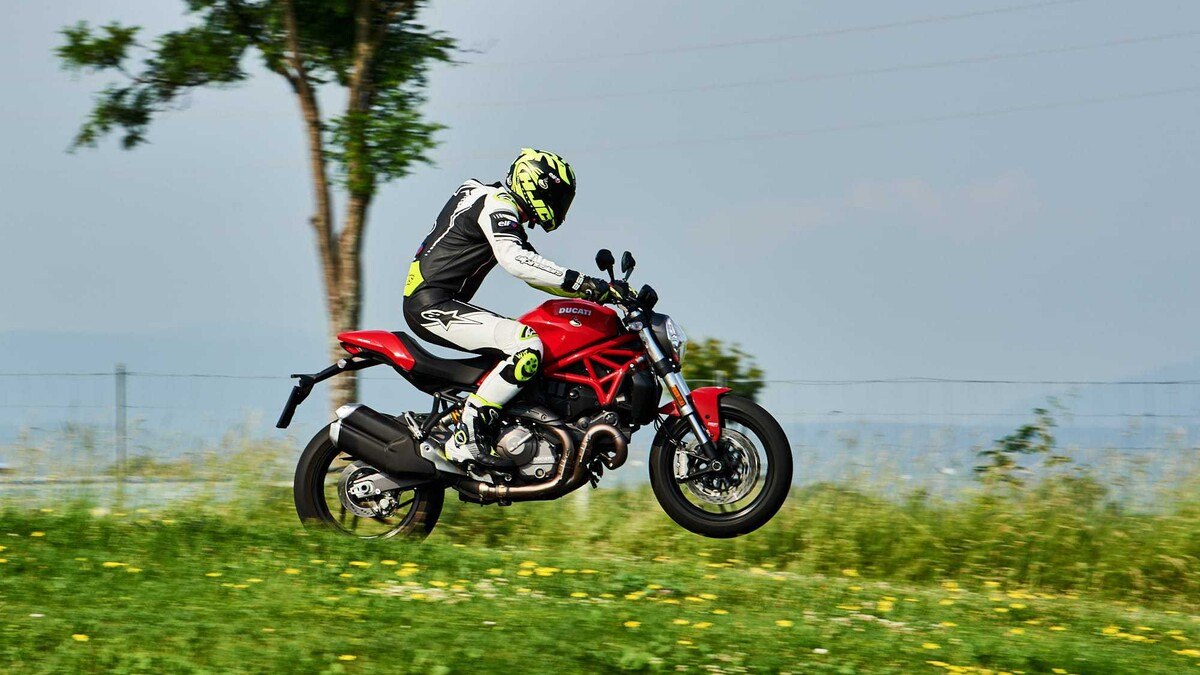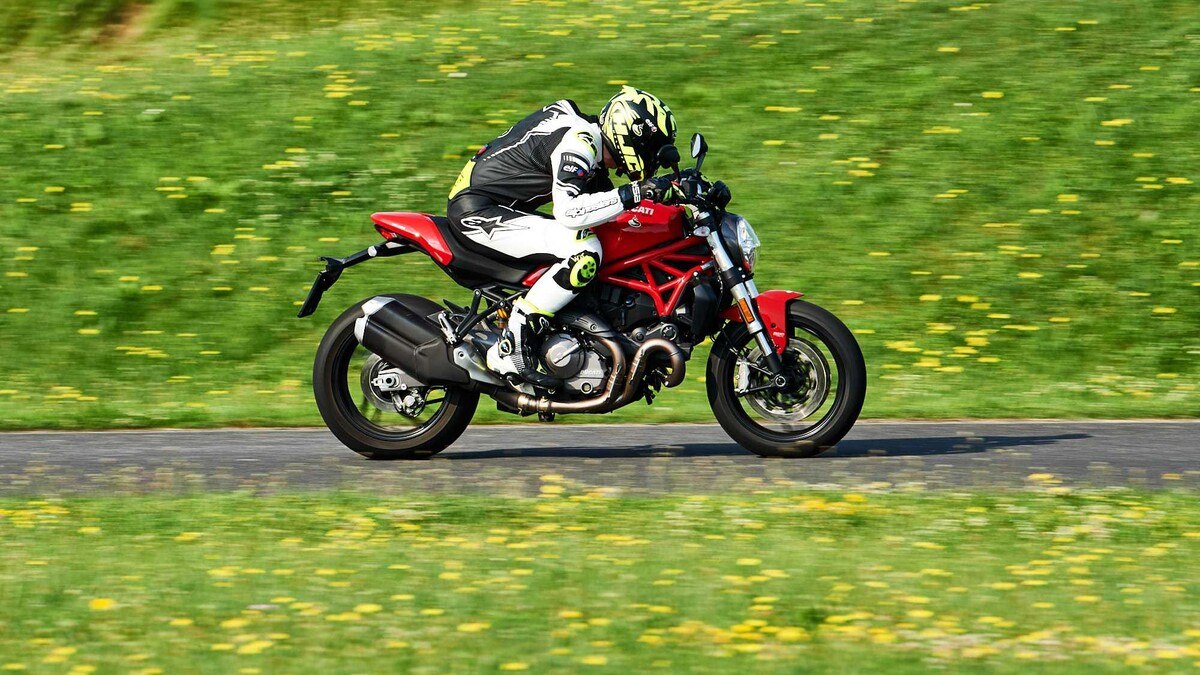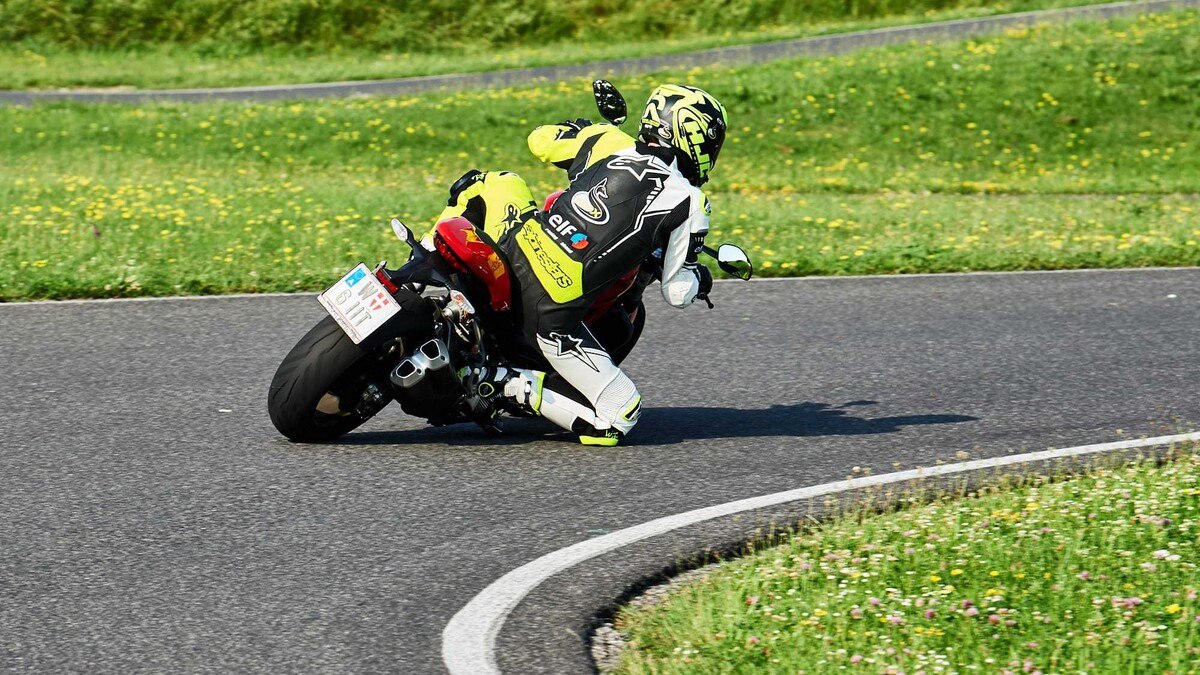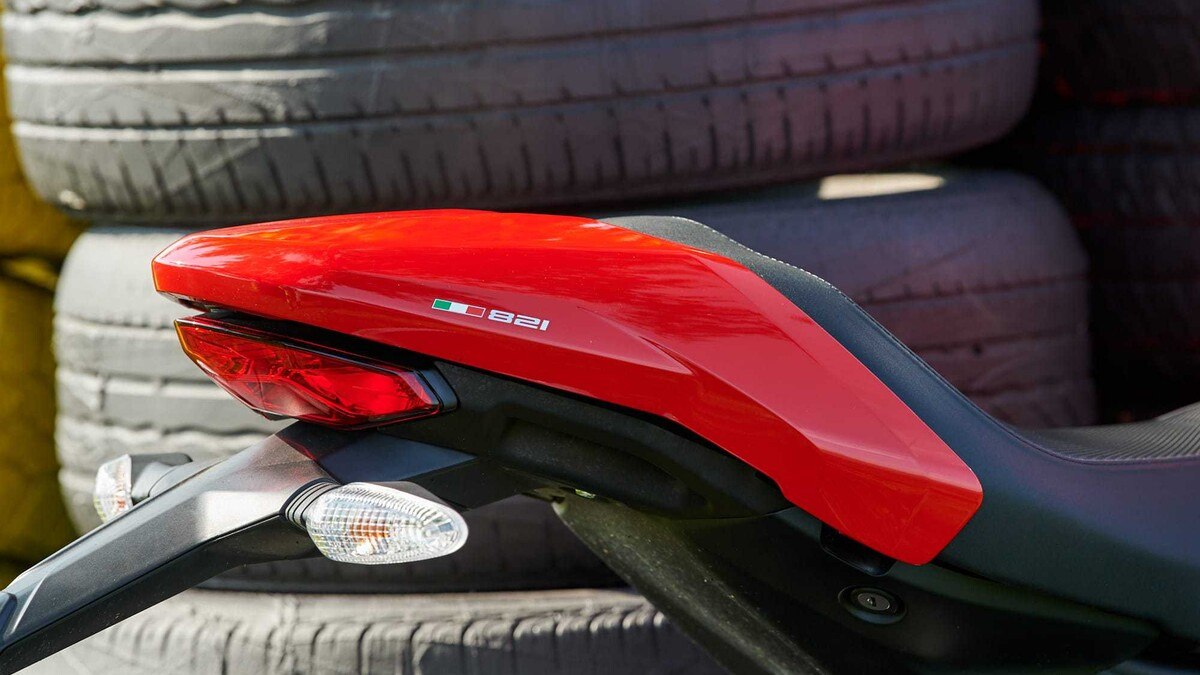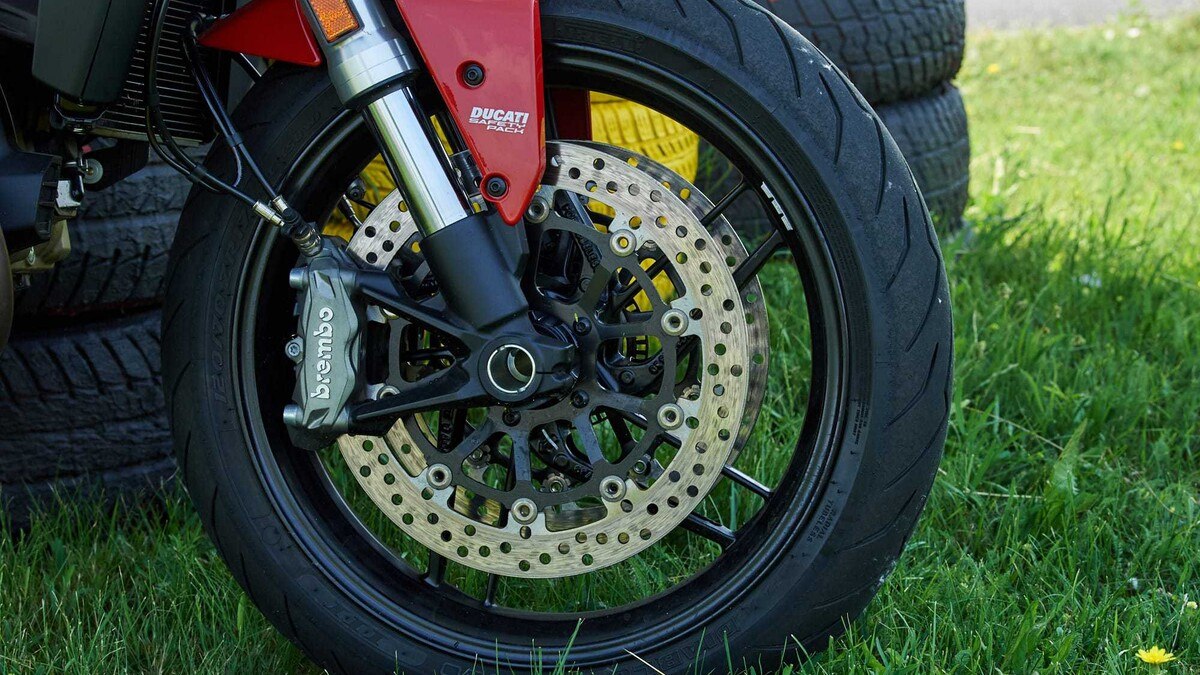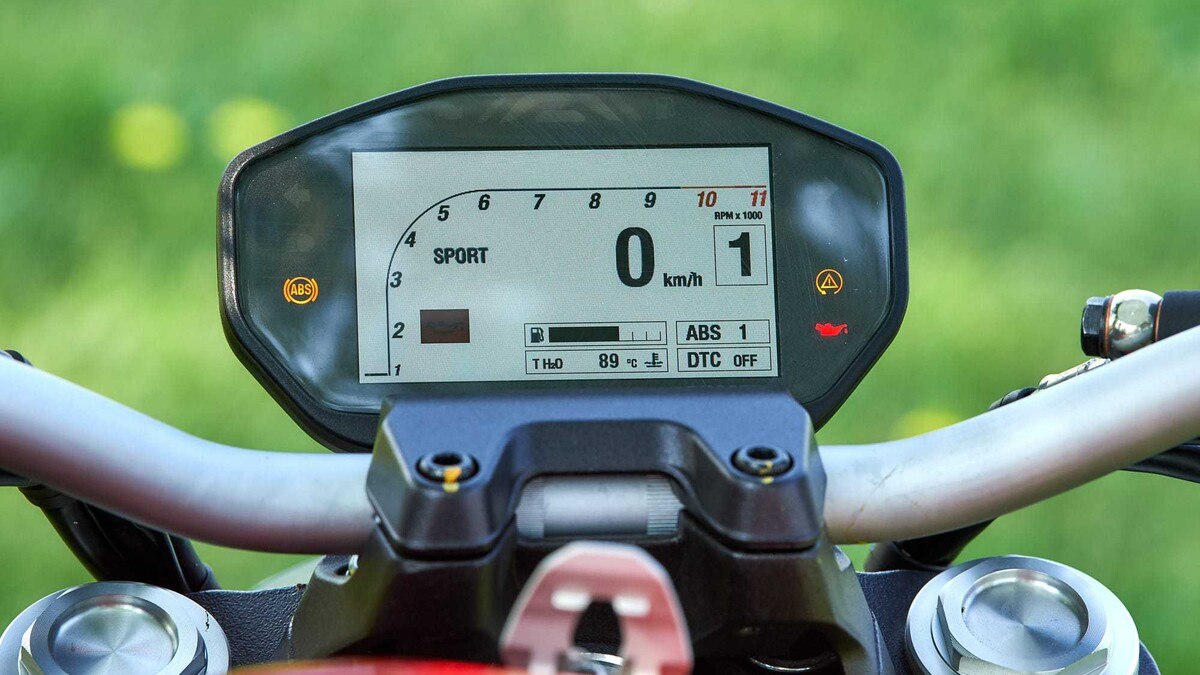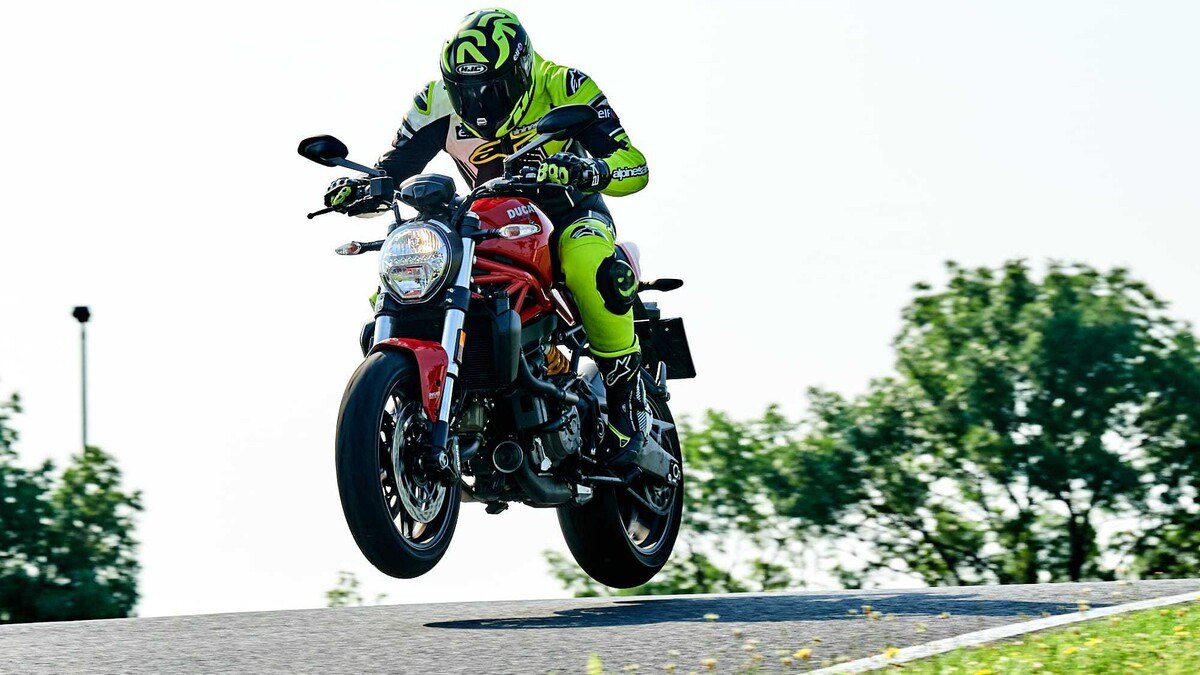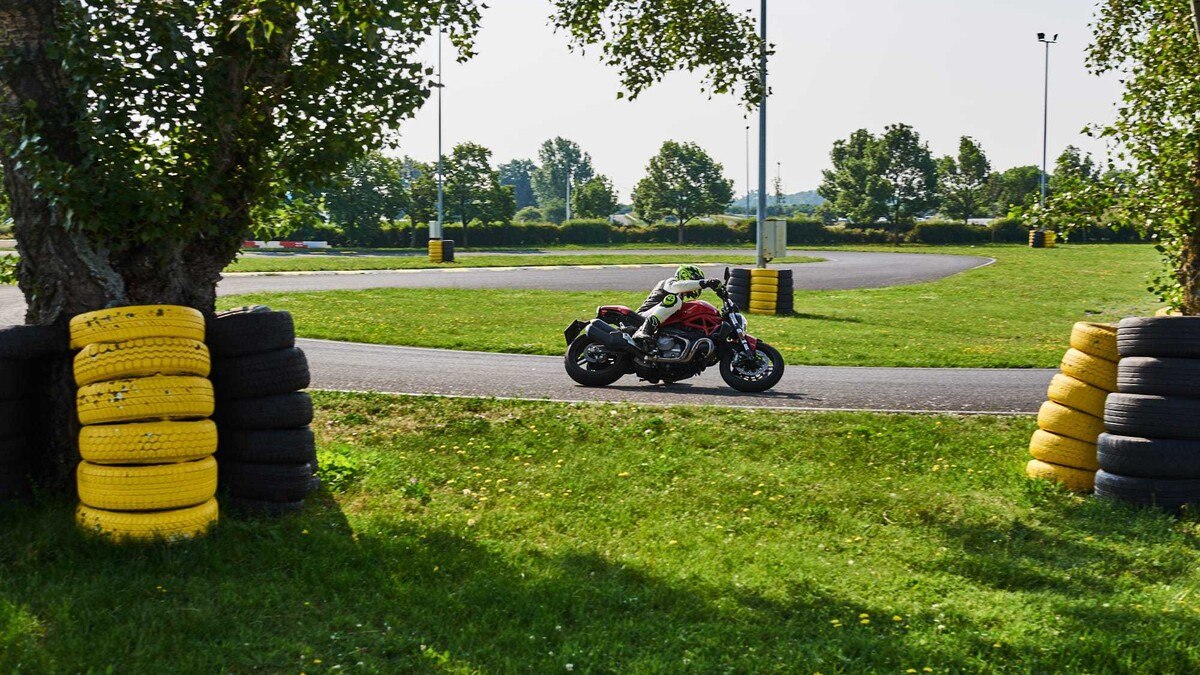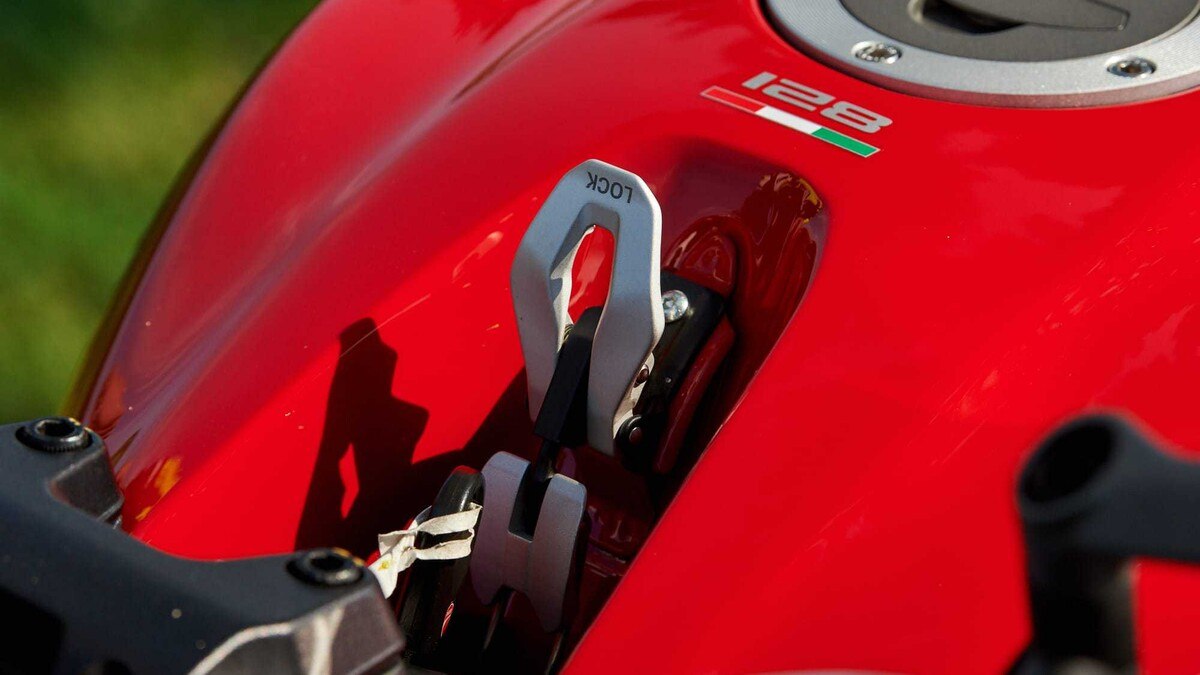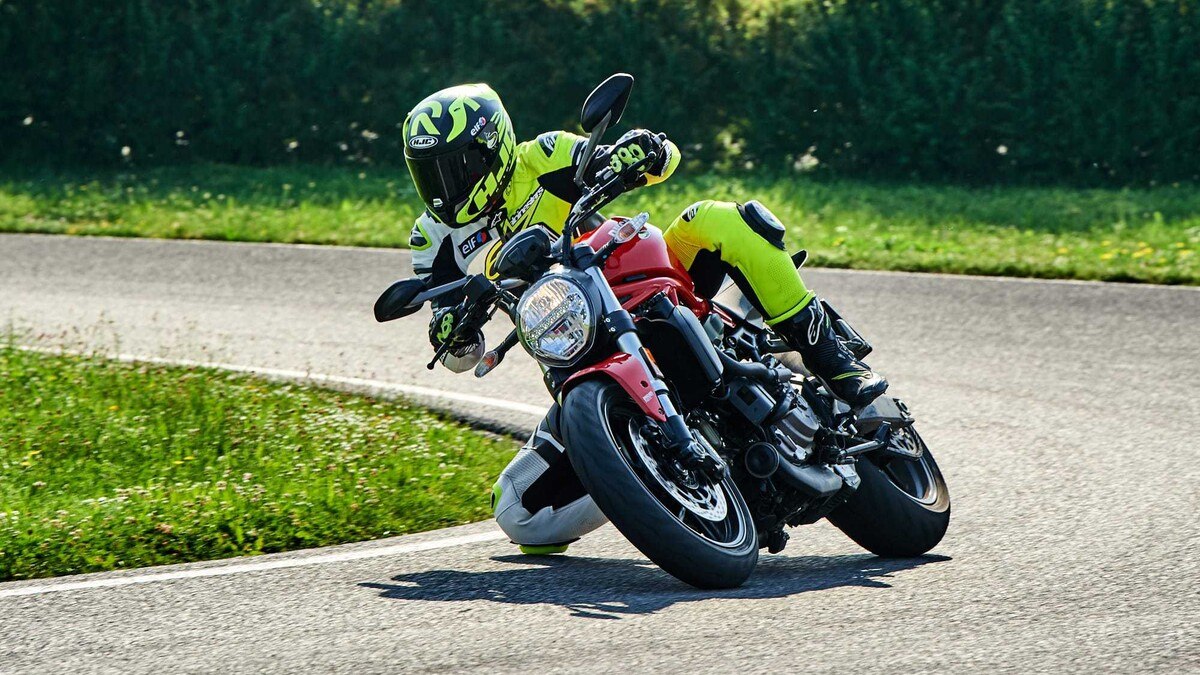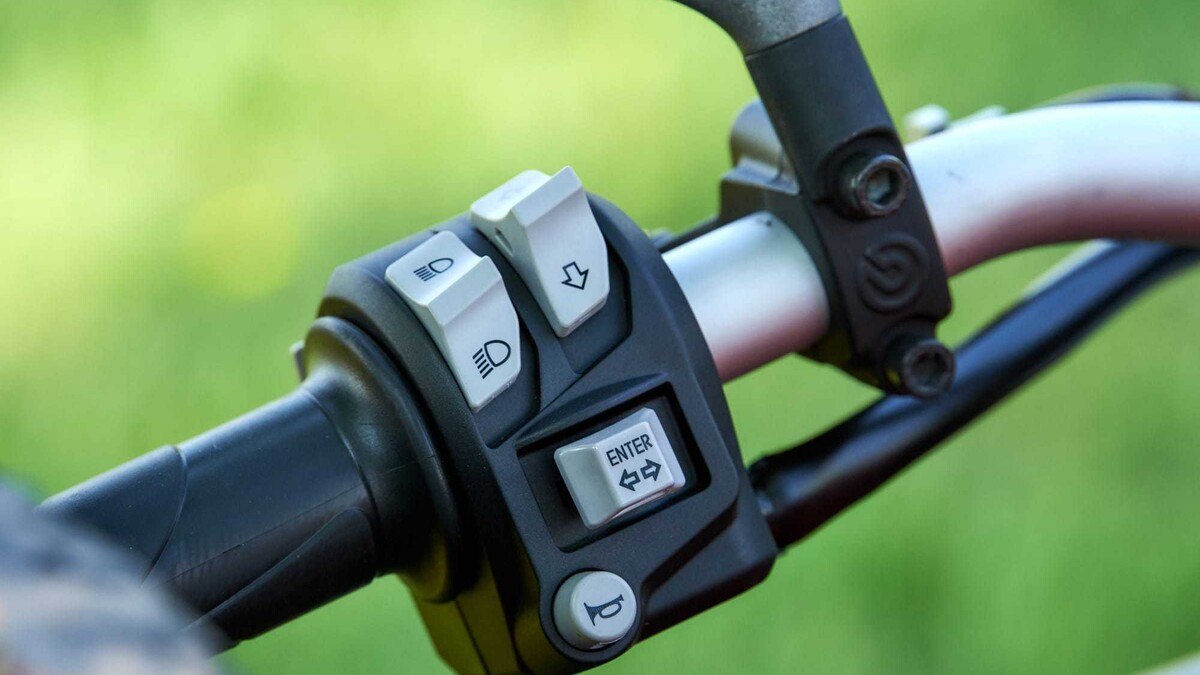Test Ducati Monster 821 - Monster, but somehow different
On the one hand, the Ducati Monster 821 is a real monster, but on the other hand, four-valve technology and water cooling are new, even though the competition has been using it for a long time. As a Ducati rider, I don't know what to think of the new, little Monster.
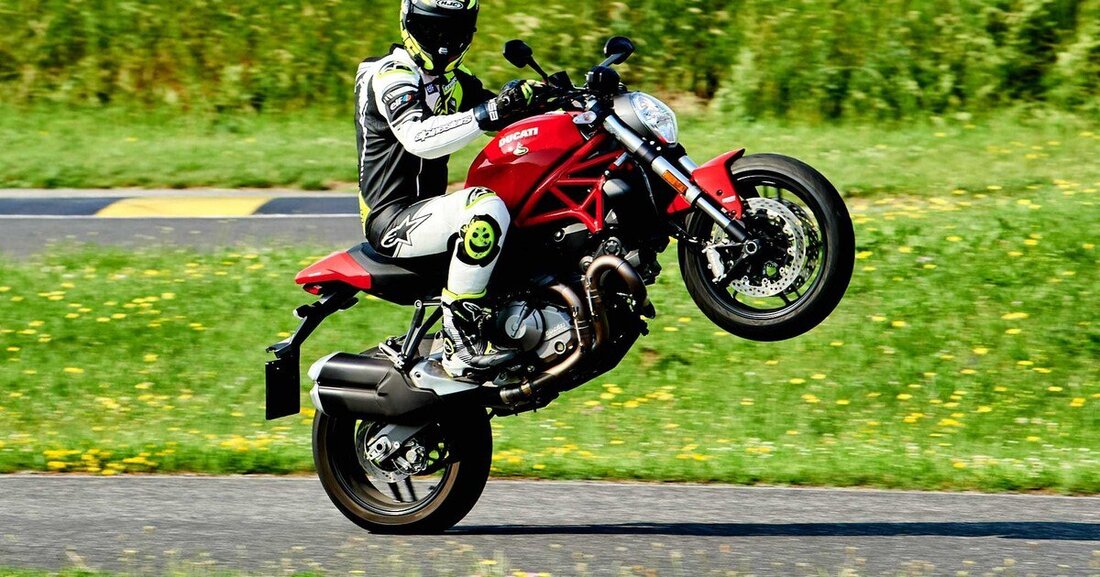
Test Ducati Monster 821 - Monster, but somehow different
ergonomics
First of all: she is a real monster. Not only the design language is clearly Ducati Monster, but also the ergonomics. The tank is classic in shape and slim around the crotch as usual. The handlebars (unfortunately only 22 mm diameter) are mounted wide and low; you are still stretched over the tank more than on many other naked bikes. Not unpleasant, more of an active ride. The view of the fully digital color display is good. Typically Ducati, you have the feeling of having the front axle in your hand. You can't see the headlight, but you can see it directly on the tip of the front wheel. There's not much to the front of the Monster. Good this way. The saddle is comfortable and the step for the pillion passenger is good enough to always have proper support. The large mirrors offer good rear visibility, but vibrate slightly at higher speeds. But it is heavy: it weighs exactly 205 kilograms with a full tank. The old, air-cooled Monsters were lighter. By the way, there is no wind protection at all. If you are planning longer day trips or motorcycle holidays with the Monster, you should get a windshield straight away. Of course it works without it, but with it the neck is noticeably more protected. The knee angle is comfortable and the footrest position is discreetly sporty. Ergnomy belly spot is the exhaust heat guard on the right side behind the heel. If you ride in a sporty manner with the balls of your feet on the rest, you will inevitably find yourself against the heat protection and your freedom of movement will be restricted. Fortunately, the heel is not grilled by the exhaust. What is striking: the low steering angle.
Handling
A Monster was never the handiest motorcycle, but the naked Ducatis were known for their high stability. Old virtues that the Monster 821 has adopted. The steering behavior is mostly neutral, but could be a bit more light-footed. Once the tilt has been adjusted, the Monster becomes even more stable. For beginners, this results in independent driving behavior. Especially in tight corners you need a bit of force to find the right line, but once you have it, you can ride the curve very calmly with a lot of feedback. The Monster feels very firm on the road in high-speed corners. The straight-line stability is also perfect - no pendulum movements around the longitudinal axis can be detected. Not even at very high speeds. My subjective feeling dictates to me that the Monster 821 – compared to its air-cooled predecessors – simply feels a little more grown-up, longer, and more solid. You can immediately tell from the tires that the Monster 821 has sporty genes: Pirelli Rosso III are very adhesive, sporty original equipment.
Engine/gearbox
So now let's talk Tacheles. The Testastretta Vau engine with 821 cubic meters is noticeably a Ducati engine. The data sheet certifies that it has 109 hp and 86 Newton meters of torque. Absolutely credible values that feel exactly the same. The boom is enough in all situations. That's all you need on country roads. Really not. But: the engine has character. Or to put it another way: it rattles and jerks. This includes noticeable constant jerking, as well as harsh load change reactions below 4000 rpm. The Italians could do that better. I suspect that it is also due to the Euro 4 emissions standard. But honestly: For a premium motorcycle from 2018, this is – two-cylinder or not – too much unrest in the engine. From 4000 tours onwards the picture is completely different: the engine runs noticeably smoother, hangs very well and spontaneously on the gas and every throttle command is implemented immediately. The engine then runs nicely linearly with a lot of pressure up to the limiter at around 11,000 revolutions. It works. In short, this means: It's better to drive a gear lower, preferably not below 4000 rpm, then you can enjoy the full, smooth potential of the two-cylinder engine. By the way, the sound is surprisingly good and present. The Monster sounds like Ducati. In every situation in life. There is criticism for the gearbox of the test machine. The gearshift was very shaky in gears 1 to 3 and a bit stiff at times. In addition, the idle kept slipping even when stationary. Very annoying when you're standing relaxed at the traffic lights and suddenly the red Bella gives a little hop forward and goes out. Too bad, it could be better. There is praise for the very well-functioning anti-hopping clutch, which is easy to pull using a cable. Pleasant: Ducati has been able to increase the valve clearance control or setting to 30,000 km intervals. An oil change is only due every 15,000 km. This significantly reduces maintenance costs.
Undercarriage
As already mentioned briefly when it comes to handling, the 1485 mm wheelbase guarantees a fundamentally stable driving experience. Bitter: The 43 mm Kayaba fork is not adjustable. Not at all. The fork isn't generally as smooth as butter, but if you put your foot firmly into the iron, it dives deep. The harder you brake, the more noticeable the lack of damping becomes. But the fork doesn't go on block. The advantage of the generally soft tuning: small bumps are absorbed well and the fork also handles hard edges quite cleanly. However, since the seating position is very front wheel oriented, you feel the soft fork more than with more neutral ergonomics. For me personally (at that price) at least the fork should have been fully adjustable. A Sachs monoshock with 140 mm of travel is used for the rear wheel suspension, which is surprisingly adjustable in rebound (=rebound speed) and preload. To shorten the chassis topic: It works well, but with a list price of 13,395 euros it could have been a little more. Because the engine makes you want to go on sporty rides, the chassis can keep up, but doesn't provide the clearest feedback. Unfortunately, the single-sided swingarm is a thing of the past. It's a shame, she was always an eye-catcher among the monster models. At least you can still find her with her big sister.
Brakes
Wherever it says Brembo, it usually means sporty braking performance. It's no different here. The deceleration is good, but the feedback on the handbrake lever is too soft. This could be a top brake if the feedback were a little better. The first bite is soft, at least it feels that way, although the delay is good. I'm guessing a well-designed handbrake pump. Changing the pump is probably enough and you have the braking performance that the 4-piston monoblock brake calipers are capable of. By the way, the Bosch ABS is also tuned to be conservative and well-behaved. A bold grip with one finger is enough to trigger the ABS. A noticeable safety benefit for beginners and less experienced pilots. A slightly early restriction for sporty riders. The rear brake also decelerates well, but could also provide a little more feedback. Overall, the brakes are pretty good.
Noticed
Ducati is a premium brand. Unfortunately, for me, the detailed workmanship of the Monster 821 cannot quite keep up with this premium promise. Many Japanese naked bikes offer a price category below, similar workmanship and sometimes even nicer detailed solutions. Entry-level monster or not, at this price it has to be better made. The small tank of 16.5 liters limits the range somewhat.
Failed
The low impact. The non-adjustable fork is simply not enough for the price. The engine tuning in the lower speed range is better.
Test verdict: Ducati Monster 821, by p.bednar
More information about Ducati Monster 821
With kind support from TOTAL Austria
More action photos from the test drives can be found on Instagram: apex_moto_at
Or follow us on Facebook: Apex Moto

 Suche
Suche
 Mein Konto
Mein Konto

